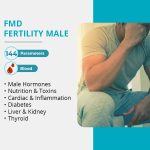
Introduction: The Transformative Power of Global Health Partnerships
The global community finds itself at a crossroads, with collaborative partnerships playing a super important role in shaping the future of women’s, children’s and adolescents’ health. In recent months, various organizations have joined forces to address funding challenges, strengthen domestic resource mobilization, and boost capacity building for health professionals. This opinion editorial takes a closer look at how tenacious advocates are working to find their way through a maze of tricky parts and tangled issues, ensuring that critical health initiatives are sustained even during times of uncertainty.
In today’s rapidly changing world, staying ahead of shifting demands can feel overwhelming and even nerve-racking. However, the collective energy emanating from global collaborations provides hope. By joining innovative initiatives and sharing expertise, partners can foster a more resilient system that protects the rights and well-being of billions of people worldwide. Throughout this piece, we will dive into the multiple layers of these efforts, reflect on what recent surveys and conferences have revealed, and explore the strategies being put in place to support essential health programming.
Understanding the Funding Crisis: Insights from Global Partner Surveys
Recent findings from a global partner survey have underlined a challenging reality: funding for programs aimed at protecting the health and rights of women, children, and adolescents is shrinking. These surveys, gathering insights from over 100 organizations spanning more than 20 countries, including regions in Africa, Latin America, and South-East Asia, have painted a picture that is both complex and worrying.
According to the survey, 89% of our partners have experienced reduced or uncertain funding, while a striking 81% reported major setbacks in advancing critical health goals. For many organizations, these setbacks have led to the downsizing or even suspension of crucial activities, especially in areas like sexual and reproductive health rights (SRHR) and health workforce training. This situation is loaded with issues that have many stakeholders feeling under pressure and forced to manage their way through a nervous funding landscape.
When we take a closer look at the finer points of this crisis, it becomes clear that a lack of flexible and equitable financing not only endangers the progress made over the years but also undermines the collective capacity to tackle the subtle details that define effective health systems. By fully understanding the survey’s findings, stakeholders can better prepare for and manage their way through each of the confounding twists and turns that come with an unpredictable funding environment.
Challenges in Securing Flexible Financing
The current climate is replete with confusing bits and complicated pieces when it comes to budgeting and funding for global health initiatives. Many organizations are not only grappling with reduced financial support but are also faced with inflexible funding structures that hinder innovation. These funds, which are super important in bridging the gap between grassroots realities and top-level policy objectives, often fail to address the nuanced needs of varied communities.
The following bullet list outlines some of the key challenges identified by our partners:
- Lack of flexible funding streams that can adapt to sudden shifts in global health needs.
- Dependence on donor-driven agendas that might overlook local priorities.
- Resistance from established funding institutions to invest in innovative and diversified health programs.
- Complicated approval mechanisms that delay the timely deployment of resources.
These issues are compounded by the fact that the funding environment today is more unpredictable than ever. Many grassroots organizations are forced to downsize their operations and reduce on-ground activities, ultimately affecting the communities they serve. By laying bare these twisting challenges, stakeholders can better align their strategies with the subtle details that matter most for achieving equitable health outcomes.
Strategies for Strengthening Domestic Health Resources
One of the core steps to offset current funding challenges lies in the mobilization of domestic resources. Recently, significant attention has been given to conferences like the African Union Specialized Technical Committee meeting on Finance and Monetary, which adopted a declaration aimed at reinforcing domestic resources for health.
This meeting, coupled with webinars on national health financing strategies, provided valuable insights on how the Global Leadership Network (GLN) and the G20 Joint Finance-Health Task Force can mobilize domestic resources effectively. By bringing together countries from diverse regions, these discussions have provided an opportunity to steer through the complicated pieces of national financing strategies and design a roadmap that aligns local priorities with international funding opportunities.
Opportunities and Strategies for Domestic Resource Mobilization
When examining the actions taken by countries and organizations, several strategies stand out as both innovative and promising. Here are some of the approaches that have been explored:
- Policy Reforms: Rolling out new policies can promote more transparent and accountable use of domestic funds in health care systems.
- Taxation Reforms: Adjusting tax structures to create dedicated funds for health is a critical piece in securing sustainable revenue.
- Public-Private Partnerships: Engaging with the private sector creates additional funding streams and introduces fresh perspectives to policy-making.
- Community Investments: Leveraging local resources and community contributions can help in bridging the gap in times of crisis.
Each of these strategies involves finding your way through tricky parts and demands proper coordination among different stakeholders. The synergy achieved when government bodies, international agencies, and local organizations collaborate can create a robust financial framework that alleviates many of the intimidating funding challenges currently faced by health programs worldwide.
Enhancing Capacity Building: Empowering Media and Communication Teams
For any advocacy campaign to succeed, spreading awareness and engaging stakeholders at multiple levels is absolutely essential. In a recent series of capacity building workshops, deliberate efforts were made to equip journalists and communication experts with the tools they need to effectively report on women’s, children’s, and adolescents’ health. The aim was to connect hard data with human stories—bridging the real-world impacts with policy discussions.
These initiatives have focused on ensuring that the media is not left to figure a path on its own when it comes to reporting on sensitive topics. Training sessions highlighted fine points like how to report on health financing issues, the fine shades of impact when communities face funding cuts, and how subtle details in health statistics can influence policy debates. Through this empowerment, journalists are now far better prepared to translate complex data into compelling narratives that influence robust advocacy campaigns.
Key Takeaways from Media Capacity-Building Workshops
The benefits of these workshops are multi-dimensional. Below is a table summarizing some key takeaways and methods adopted during these sessions:
| Topic Addressed | Workshop Method | Outcome |
|---|---|---|
| Connection Between Data and Human Stories | Interactive sessions and case studies | Enhanced reporting skills |
| Understanding Financial Reports | Hands-on data interpretation exercises | Better grasp of funding challenges |
| Engaging Policy Makers | Simulated meetings and role-playing | Improved strategic advocacy messaging |
| Storytelling with Impact | Media labs and expert talks | More engaging and human-centered narratives |
By forging stronger ties between media professionals and health advocates, these workshops help generate a more informed public discourse and lay the groundwork for increased accountability from those who hold the purse strings. This is essential if we are to make our way through a funding environment that is as intimidating as it is unpredictable.
Innovative Health Forums: Conferences and Symposiums as Catalysts for Change
Conferences such as the FIGO conference and global gatherings like the World Health Summit provide not only a platform for discussion but also for catalyzing change. Such events shine a spotlight on the interconnected nature of health challenges across different regions and demographics. For instance, at the FIGO conference, a symposium on interprofessional teamwork for maternal and newborn health underscored the importance of united action between various health professionals.
These forums create valuable networking opportunities and foster an environment where ideas can be exchanged freely. When experts and health leaders get together, even the most tangled issues start to seem less overwhelming. Participants are able to dig into the nitty-gritty of systematic challenges, share success stories, and plan cooperative strategies for the future. The symposium on human resources for health investments was one such event that offered key insights into how countries can work together to ensure that their financial and human capital is deployed effectively.
Highlights from Recent Global Health Forums
Recent discussions at international conferences have focused on several crucial areas. Here are some highlights outlined in bullet points:
- Strengthening Multidisciplinary Collaboration: Experts emphasized the need for interprofessional approaches to overcome the obstacles inherent in maternal and newborn health.
- Leveraging Public-Private Partnerships: Dialogues highlighted how private sector contributions can complement governmental efforts in scaling up health services.
- Enhancing Human Resources: There was a focused discussion on boosting investments in training and capacity building, particularly through targeted advocacy briefs.
- Global Policy Alignment: Participants stressed the importance of aligning international policies with local needs to ensure that the benefits of health programs reach every sector of society.
These forums were also used as a launchpad for initiatives such as the GLN parliamentary network, which seeks to extend advocacy channels beyond the usual borders by engaging legislative bodies around the world. By taking the initiative to build these networks, stakeholders are not only finding their way through the maze of funding and policy challenges but are also creating a more interconnected global community dedicated to health survival and success.
Building a Resilient Future: Looking Ahead to the G20 and Beyond
Looking forward, upcoming global meetings such as the G20 discussions offer a major opportunity for advocates to push for stronger commitments and more stable resources. In November, when the world’s financial powerhouses assemble, there is an immense chance to steer through the current funding uncertainties, paving the way for more inclusive and equitable health systems.
At these high-stakes gatherings, the emphasis is on advocating for policies that support women, children, and adolescents through coordinated media efforts, enhanced legislative discussions, and expanded international partnerships. PMNCH and its partners are preparing to leverage events like the G20 Health Working Group Meetings and the Social Summit as platforms to promote a message of hope, resilience, and sustained advocacy.
Key Advocacy Strategies for the G20 Discussions
Successful advocacy for global health during these meetings is built on several strategic pillars:
- Intensified Media Outreach: Utilizing digital platforms and coordinated events to broadcast success stories and challenges.
- Strengthening Legislative Ties: Engaging with national leaders to gain their support for equitable financing and reform policies.
- Mobilizing Community Voices: Encouraging local communities to share their experiences to demonstrate the real-world impact of funding cuts.
- Sharing Data-Driven Insights: Presenting clear and compelling evidence from global surveys to support calls for increased investments.
By deploying these strategies, advocates can help ensure that funding decisions made at these international forums are not only well-informed but also truly aligned with the needs on the ground. This balanced approach between high-level policy discourse and grassroots realities is key to addressing the confusing bits and subtle details that can make or break long-term health outcomes.
Working Through Tricky Parts: The Role of Capacity-Building Workshops
Throughout October and into the upcoming months, a series of capacity-building workshops have been rolled out to help stakeholders work through the confusing bits of health communication and advocacy. One session, in particular, dedicated to equipping journalists with the right set of tools, has emphasized the need to connect numbers with narratives. These sessions shed light on how even the smallest twists in data can lead to substantial shifts in policy-making.
Moreover, specialized workshops for advocacy experts have been designed to help them figure a path in today’s challenging operational environment. The sessions cover several tricky parts, including:
- Recognizing the subtle differences in reporting requirements for various audience segments.
- Understanding the fine details of policy documents and how they relate to on-the-ground objectives.
- Building local networks that can provide timely feedback and support for media initiatives.
- Utilizing digital tools to enhance outreach and engagement with both policy makers and the public.
These engagements not only empower participants but also ensure that the collective voice of health advocates continues to be heard at every level of discussion. The knowledge gained from such workshops is super important in transitioning from a mindset of reactive funding cuts to one of proactive, community-driven resource mobilization.
Tackling Health Workforce Challenges: The Need for Investment in Human Resources
One of the most critical issues at the heart of recent discussions is the need to boost investments in human resources for health. A well-trained and adequately supported workforce is essential to delivering the high-quality care that communities depend on. However, the current economic climate has forced many organizations to retrench or even suspend training programs that are essential for building capacity in the health sector.
Discussions at key conferences have emphasized that investing in human resources is not just about numbers—it’s about nurturing a workforce capable of handling everything from routine healthcare challenges to emergencies. The role of human capital in ensuring that the subtle details of patient care are not lost in translation during crises is a point of common agreement among health leaders worldwide.
Why Investment in Human Resources is a Must-Have
The following points outline why bolstering health workforce investments should be viewed as a non-negotiable element in the global health agenda:
- Improved Patient Outcomes: A well-trained staff can deliver care more efficiently, reducing complications and improving overall patient health.
- Enhanced Crisis Response: Skilled professionals are better equipped to manage public health emergencies and unpredictable challenges.
- Long-Term Sustainability: Continuous training and professional development ensure the long-term viability of health systems across the globe.
- Boosted Morale and Retention: Investing in workforce training creates a more supportive work environment that helps retain top talent.
These points illustrate that it is far from enough to simply address the immediate gaps in funding. There needs to be a sustained effort to work through the tangled issues of human resource management, ensuring that the individuals responsible for carrying out health services have the super important backing they need to succeed. This is particularly crucial in the fields of maternal and newborn health, where every minute can make a difference and where the human touch remains irreplaceable.
Learning from Global Case Studies: Stories of Resilience and Innovation
Real-life case studies provide some of the best insights into how global partnerships can overcome intimidating challenges. Across regions, numerous organizations have demonstrated that despite funding uncertainties and confusing bits within health systems, success is achievable through creative adaptation and persistent collaboration.
Take, for example, a health initiative in Southeast Asia that managed to reorient its funding strategy in response to a sudden budget cut. By working closely with both local governments and international agencies, the project realigned its objectives, identified untapped domestic resources, and launched innovative community health programs. This case study is a prime example of how finding your way in a challenging environment requires a mix of creative problem-solving, steadfast collaboration, and a willingness to engage in fine-tuned adjustments to long-standing protocols.
Another inspiring story comes from a Latin American country, where partnerships between public institutions and private foundations have led to the creation of special funds dedicated to maternal care. Despite the seemingly overwhelming hurdles, a determined focus on clear communication, strategic planning, and capacity building allowed these groups to secure funding that not only addressed immediate needs but also paved the way for a more sustainable future. Such narratives act as bright beacons for other nations confronting similar issues, demonstrating that even in a tense and unpredictable funding scenario, there is always room for transformative change.
Key Lessons from Global Success Stories
Drawing on these real-world examples, we can list a few key lessons for those interested in bolstering their own initiatives:
- Flexibility is Crucial: Developing an adaptive strategy that can shift as circumstances change is critical to long-term success.
- Engagement at All Levels: Whether it’s local communities or international policymakers, every stakeholder’s voice matters in the grand scheme of things.
- Innovation Drives Impact: Adopting new approaches and technologies can often turn around even the most nerve-racking challenges.
- Persistent Advocacy Pays Off: Continuous dialogue and regular feedback loops can help keep everyone aligned with the ultimate goals.
These lessons, while drawn from diverse contexts, share a common thread: success in the field of global health hinges on a robust, cooperative approach that leaves no stone unturned. By staying committed to these guiding principles, organizations are well-equipped to take on even the trickiest of funding challenges with renewed optimism and strategic insight.
Overcoming the Intimidating Gaps: A Call for Unified Global Action
At the heart of all these discussions is a resounding call for increased global advocacy and stronger commitments to equitable health financing. The current environment, loaded with issues stemming from funding uncertainty and restrictive financial policies, calls for a unified approach. The voice of every organization, every community, and every stakeholder remains essential in this fight.
Our international counterparts have already taken several steps to show that change is possible. Whether it’s through formal declarations by bodies like the African Union or creative new approaches showcased at global summits, there is a palpable sense of urgency to address these challenges now. As we look toward upcoming events like the G20 discussions, the need to consolidate these efforts becomes ever more clear.
This is not a time for isolated actions or half-hearted measures. It demands a comprehensive strategy that addresses each confusing bit and every subtle twist in the narrative of global health. It also requires that every member of the international community takes personal and collective responsibility—not only to secure adequate resources but to ensure these resources are distributed in a way that meets the ever-changing needs on the ground.
Steps to Strengthen Global Health Advocacy
To bolster global health advocacy, several steps can be taken. The following bulleted list summarizes some practical measures that stakeholders can adopt:
- Engage Beyond Traditional Channels: Use digital advocacy platforms, social media, and community outreach to widen the campaign’s reach.
- Foster Cross-Sector Collaborations: Combine the strengths of public, private, and non-governmental sectors to pool expertise and resources.
- Implement Structured Feedback Mechanisms: Collect regular insights from frontline workers and beneficiaries to refine advocacy messages.
- Capitalize on Evidence-Based Approaches: Let data from global surveys and case studies guide strategic decision-making.
- Maintain Continuous Dialogue: Facilitate ongoing communication between donors, governments, and grassroots communities to ensure transparency.
These actions, when taken together, can help create a robust framework that aligns financial mechanisms, human resources, and policy initiatives into a cohesive strategy. While the road ahead is definitely filled with dumbfounding issues and complicated pieces, the promise of a healthier, more equitable world for all is a prize that’s worth fighting for.
Conclusion: A United Path Forward
In wrapping up this discussion, it is clear that the current global health landscape—marked by a mix of progress and setbacks—calls for unwavering commitment from all sides. The evidence is unmistakable: while funding challenges continue to pose nerve-racking obstacles, they also open up opportunities for redefining our approach to domestic resource mobilization, capacity building, and strategic advocacy.
The series of high-level meetings, workshops, and symposiums that have taken place recently serve as a reminder that the road to better health outcomes is not without its twisted and tangled issues. However, by prioritizing flexibility, fostering cross-sector cooperation, and relentlessly advocating for equitable financing, we can work through these tricky parts—ensuring that even the most intimidating gaps are eventually bridged.
Looking ahead, the upcoming G20 discussions stand as a pivotal moment for all who champion the well-being of women, children, and adolescents. It is during these high-stakes conversations that we have the chance to send a clear message: that global recovery and progress depend on inclusive, responsive, and super important health systems that leave no one behind.
As we all continue to navigate through the challenges together, let us remain inspired by the stories of resilience and innovation from around the world. Let us dig into every layer of complexity with the understanding that every small distinction and every fine detail matters. And ultimately, in a world where change is the only constant, our collective engagement is the converting force that transforms obstacles into opportunities.
Now more than ever, it is crucial for every stakeholder—from the grassroots communities to international policymakers—to stay engaged and to continue sharing experiences, insights, and innovative solutions. The strength of our partnerships, the creativity of our solutions, and the perseverance of our advocates will determine how effectively we can work through the challenges of today to build a healthier, more inclusive tomorrow.
In conclusion, let us stand firm in our resolve to secure a future where every individual has access to the world-class health services they deserve. Let us commit to continuous dialogue, continuous improvement, and above all, a shared vision of a world where funds, resources, and expertise are mobilized with clarity and purpose. Together, we can and will make a difference in restoring hope, fueling progress, and shaping a future defined not by funding uncertainty but by innovation, unity, and compassionate care.
Originally Post From https://pmnch.who.int/news-and-events/news/item/28-10-2025-message-from-rajat-khosla-pmnch-executive-director—october-2025
Read more about this topic at
Goal 17: Global Partnerships – United Nations Sustainable …
Strengthening Global Partnerships | 2024-2025


